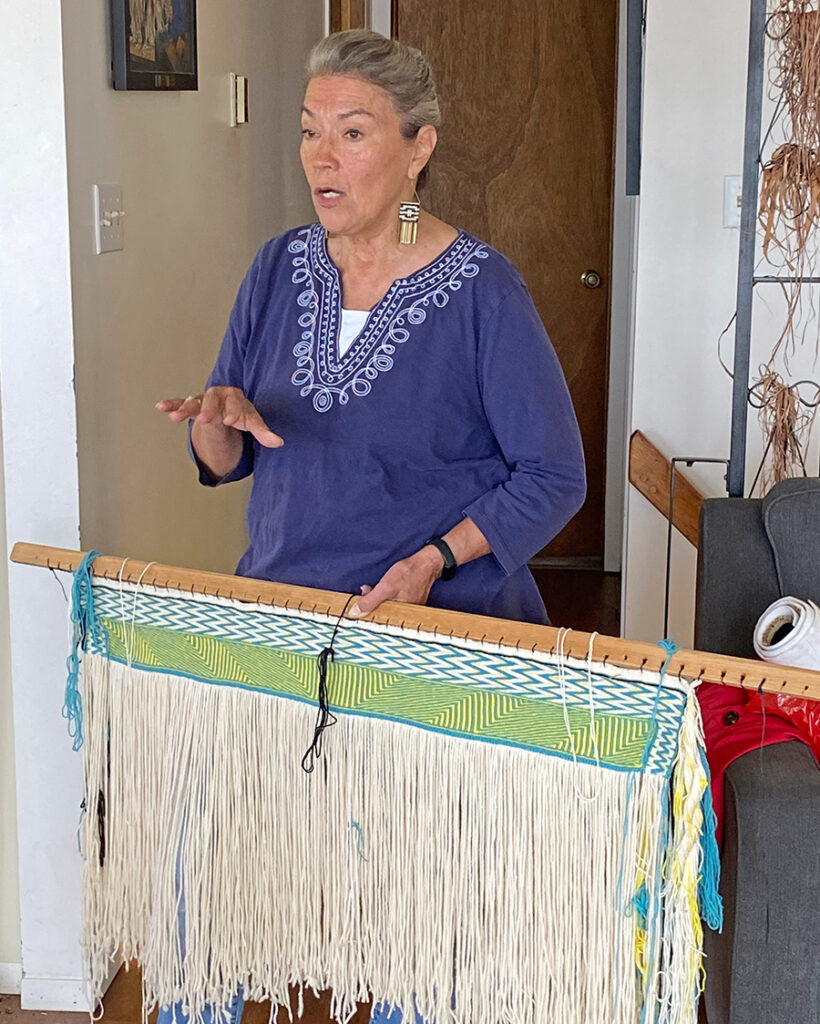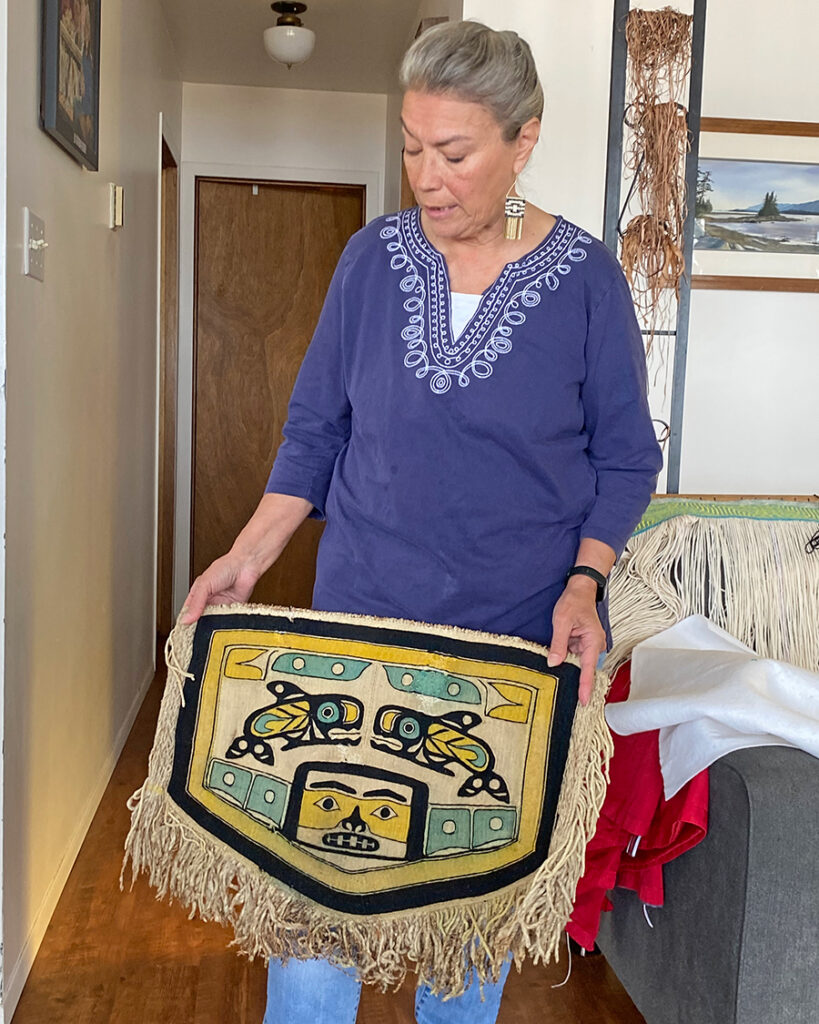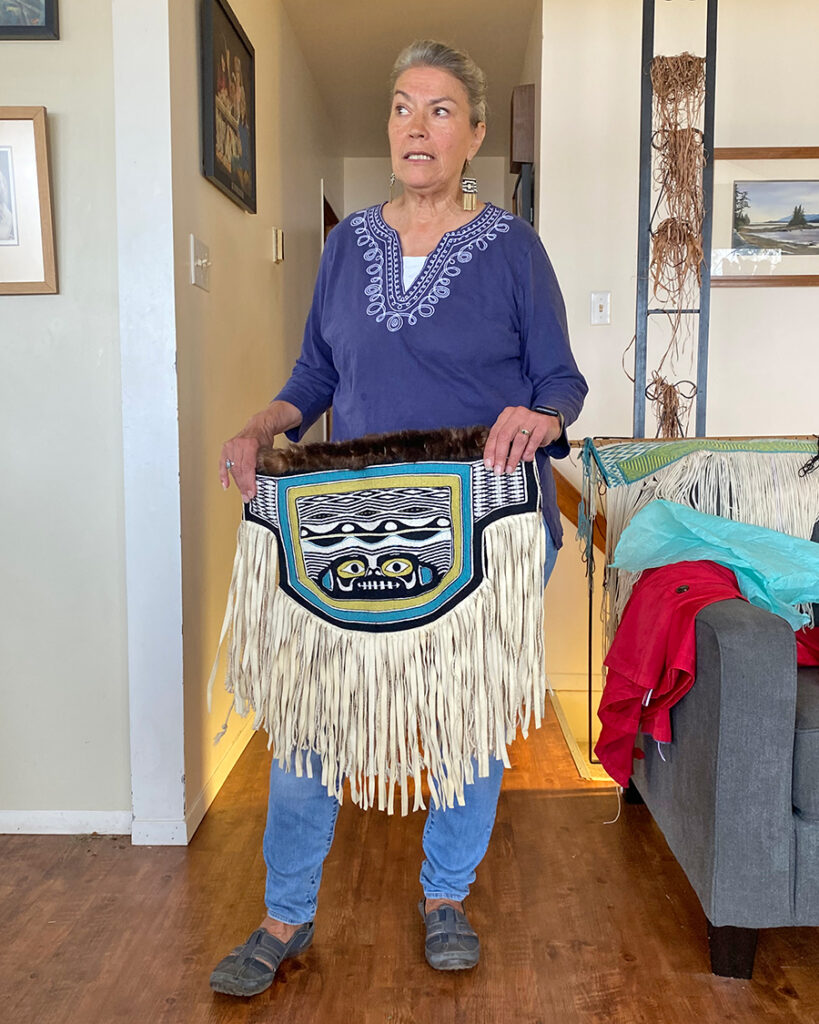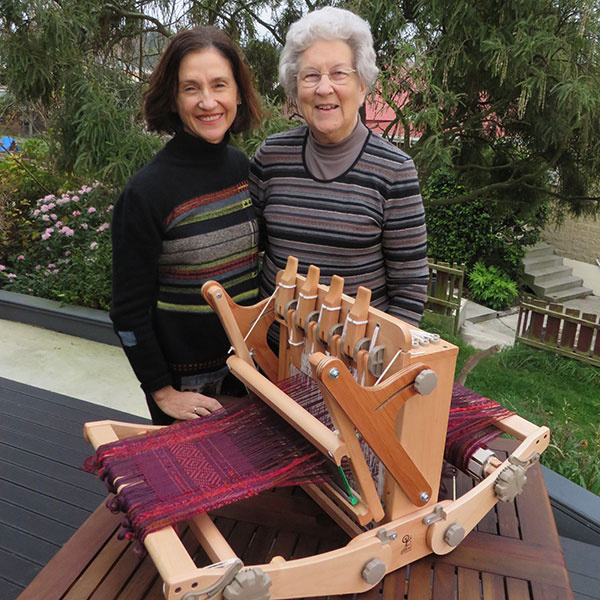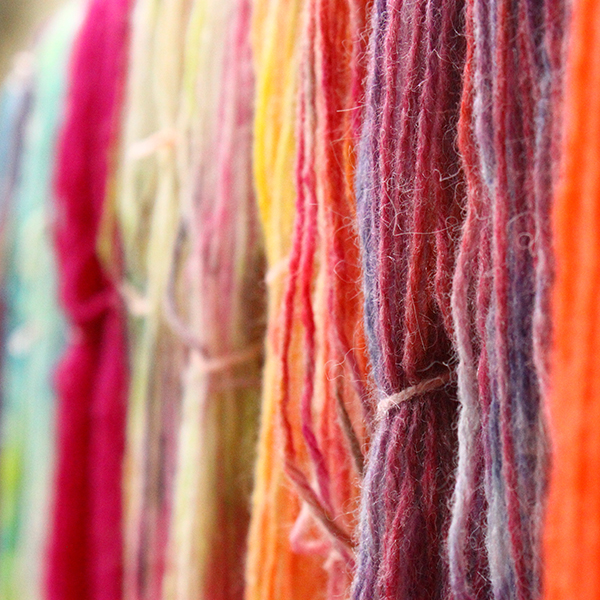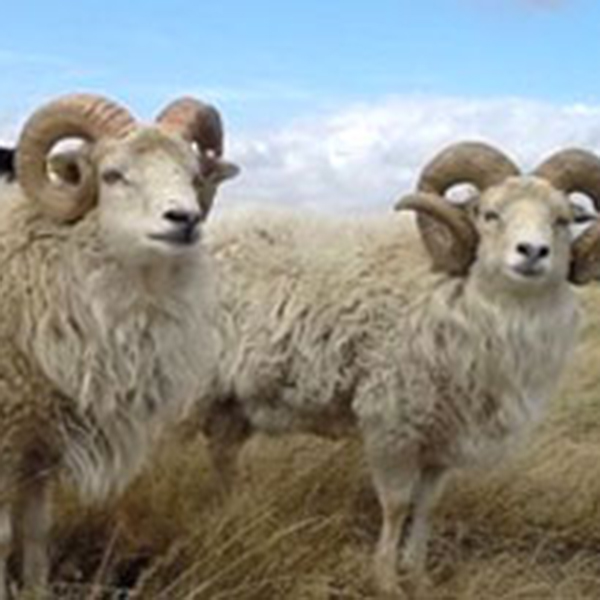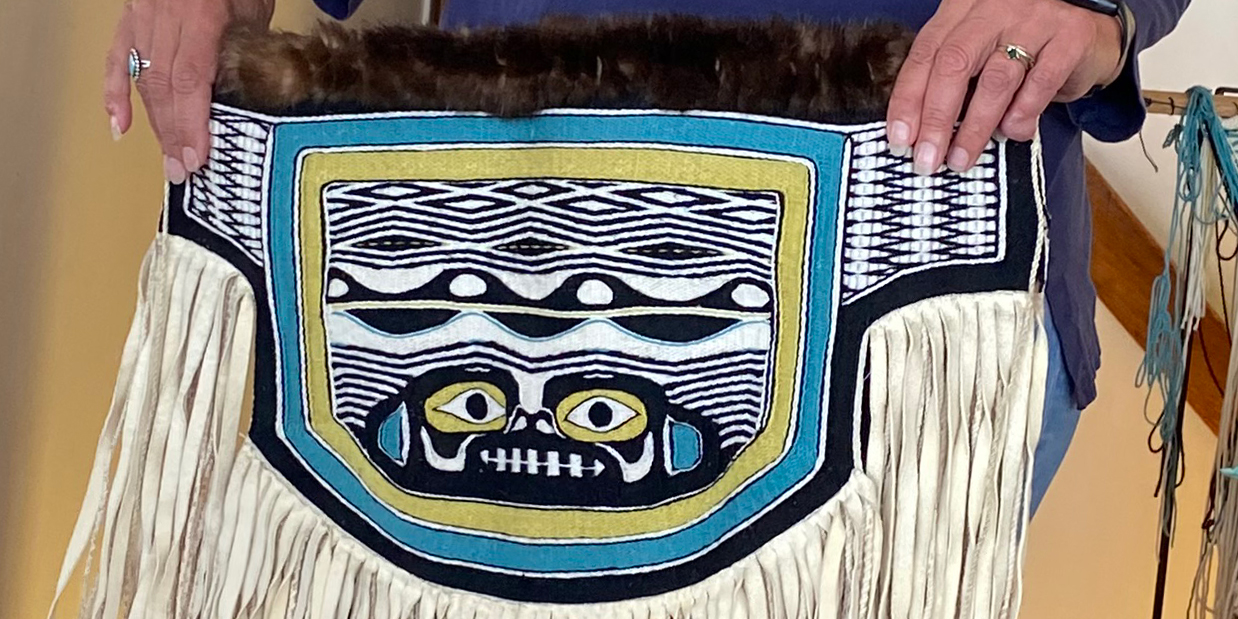
Ancient Techniques from Modern Day Masters
Elizabeth and Richard have just returned from a trip to Canada and were honoured to visit Haida weaver Evelyn Vanderhoop in her Masset home on Haida Gwaii. Evelyn has helped revive the ancient techniques of the Haida people and her work is in many collections including the Canadian Museum of History.
During a recent visit to Haida Gwaii, BC, Canada, with dear friends Terry Nelson and Karen Selk (formally of Treenway Crafts), Richard and I were privileged to meet Haida master weaver Evelyn Vanderhoop. She specialises in weaving the chief’s robe and dance apron using Raven’s Tail (northern geometric weaving) and Naaxiin/Chilkat (featuring curvilinear shapes commonly referred to as formline elements and produces a perfect circle) techniques.
Evelyn, daughter of Delores Churchill and granddaughter of Selina Peratrovich comes from a weaving family. From early childhood, she was brought to the forest and beaches to harvest weaving materials: spruce roots and cedar bark. Together with goat’s wool and natural dyes she creates ceremonial objects of unmatched beauty and cultural significance.
The techniques used to make chiefly robes from mountain goat wool, evolved from basketry weaving techniques. The loosely hung warps are made from pure mountain goat wool that was spun and rolled down the spinner’s thigh. This creates a dense firm warp that will not bunch under the tension of the weavers’ finger actions. The “loom” is simply a drilled bar suspended between posts. The weaving progresses downward as it is created by the rows of weft twining.
For the Chilkat weaving the warp is yellow cedar bark with mountain goat hair and the weft is straight mountain goat hair. For Raven’s Tail blankets both warp and weft are either straight mountain goat or a wool/mountain goat combination.
The weft yarns are entered on the left side edge and woven in a two-strand twine, across to the right side. The tie off, creates a fringe that is mirrored with a fringe addition on the left side. Heavily fringed, the white, black and yellow, rectangular robe is an impressive garment. Geometric patterns grow with the addition of each separate woven row.
Thank you, Evelyn, for welcoming us to your home and explanation of the Haida weaving tradition.
To learn more read The Chilkat Dancing Blanket and The Raven’s Tail, both books by Cheryl Samuel.
